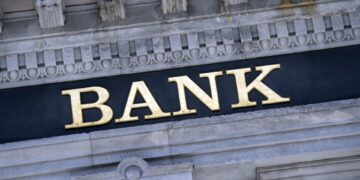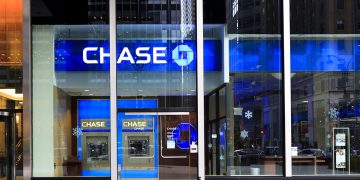ESG may be all the rage, but what about retail banking?
The deposits you make at your retail bank for personal and business accounts sustain the bank’s ability to make loans and investments. Loans and investment fuel growth. Put simply, a bank’s capital can flow towards fossil fuels or renewable energy, towards local business loans or financing environmentally damaging projects.
Imagine if all retail banks required environmental impact assessments for loan applications. Or committed a certain percentage of loans and investments for renewable energy projects.
Certainly, this is a vision all climate-concerned citizens can support, and the opportunity to influence banking as citizens is large. Most U.S. households (93 percent) have a checking or savings account while only 52 percent own stock.
Why don’t more people choose to bank with climate-friendly retail banks that have clear environmental investment and loan policies?
So why don’t more people choose to bank with climate-friendly retail banks that have clear environmental investment and loan policies? Last February, I began empirical research to discover the reasons people don’t change to green banks.
I narrowed the pool of participants to people who self-identify as either “climate activists” or “environmentalists.” The study was designed to hold a series of in-person focus groups in Europe and the United States. I finished two focus groups in Europe before pausing the project due to COVID-19. While more research is required, a few insights can be drawn from this small data set. I share here the interim results for the first time.
In the opening discussion in both groups, the majority said that they’d not made clear decisions about where to bank. One participant in her early 20s, an ardent Swiss climate change activist, said that her parents had set up her banking account and she’d never questioned it. Others said they’d picked the least-worst option for service and didn’t think about the choice again.
The most common responses from both focus groups related to a lack of information about good alternatives and how to find out more information about their current banks’ investment policies. Many participants expressed a sense of being overwhelmed at the thought of trying to find this information and make the change.
What I heard aligns with published research. Many people only move bank accounts during a moment of transition such as starting college, moving to a new city, starting a new job or getting married, then remain there unless a disruptive event happens. Many folks simply begin with the most convenient bank and stay. The U.S. national average age of a checking account in the U.S. is 16 years. I am no different; I opened my first account where my parents banked and kept it there for more than a decade.
As the conversations developed, emotive reasons surfaced as driving forces behind the inertia. Two of the younger participants (age 20-25) expressed frustration that they don’t feel that they have any power as a young client of a big bank. One said bluntly: “Who am I to ask them about the bank’s investment policies? The bank manager has all the power. My account is tiny.”
Older respondents (in their 50s) expressed a different emotional factor: cynicism. In the first focus group, the conversation moved to how could they really believe anything a bank says, including the well-known green banks?
The responses fell into three categories that correspond to Chip and Dan Heath’s Switch framework. This framework applies the image of a rider on an elephant trying to steer the elephant down a path. The elephant, symbolizing our emotional body, must want to go. The rider, symbolizing our mind, must want to go as well. Our minds are lazy, so the change needs to be easy. Finally, the path must be clear with no obstructions or unacceptable costs. If any of these three conditions aren’t met, change will be difficult. The customer will not change banks.
Using this simple framework, we see focus group results hit all three types categories.

Banks need to respond to all three types of barriers to enable more people to make the switch. In other words, providing only the information won’t suffice. Banks need to ensure the process of switching is low-friction and that feelings of loyalty, security and possible skepticism are addressed. Clients also need to feel welcomed as valued and equal partners.
We’re itching to get back out when it’s safe to hold more in-person focus groups and build out this research. In the meantime, the lessons from banking can be applied to other products and services. How are you addressing:
- The rider: Do your customers know your climate-friendly, “green” product exists? Can they easily find relevant information?
- The elephant: How do you help customers believe your claims? How do you make them feel genuinely welcome?
- The path: Are your products really easy to find? Do you need to woo new customers away from “sticky” loyalty programs?
Let’s keep the conversation going. Leave a comment here or reach out to me at [email protected].








